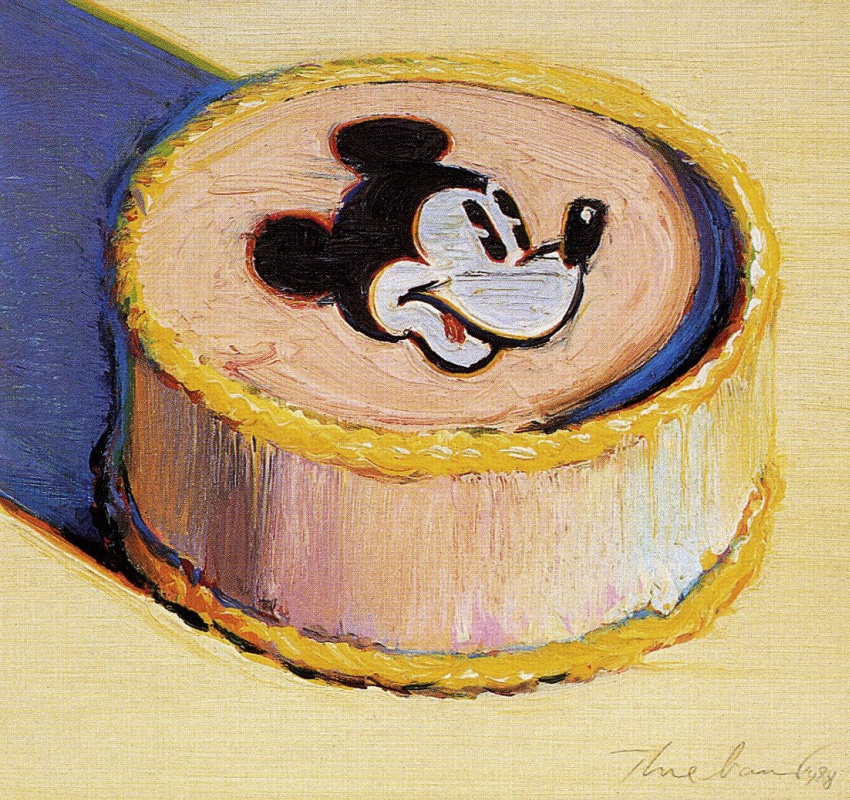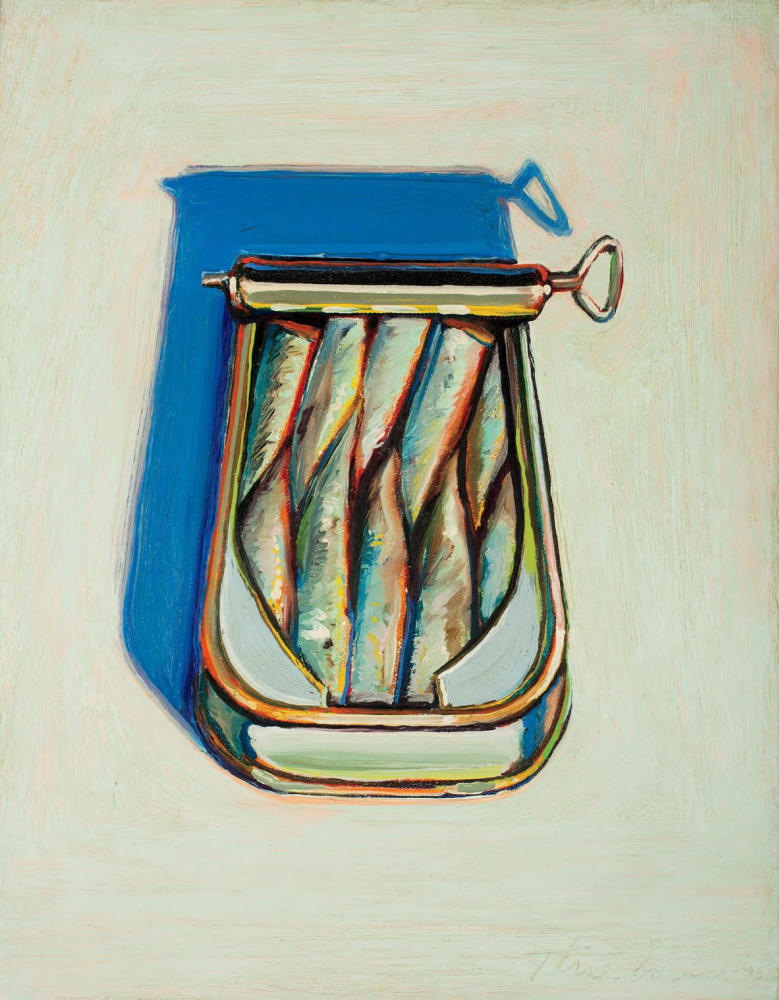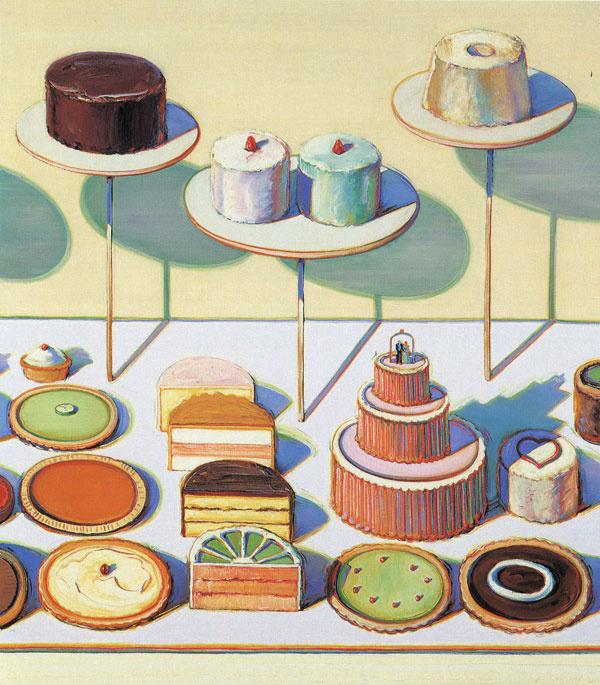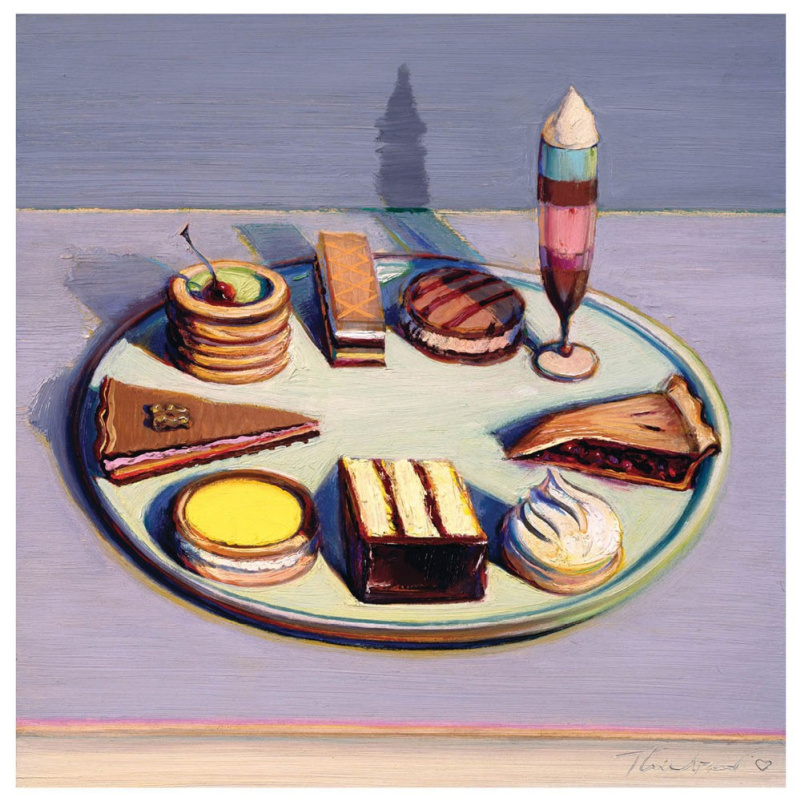Wayne Thiebaud’s works are the very embodiment of comfort, tranquillity and quiet joy. It seems that the candy idyll in Thiebaud’s paintings reflects the stability of his life. It is difficult to find sharp turns, some special ups or downs in the artist’s biography. He gradually, but confidently walked towards success, remaining side by side with more extravagant and scandalous colleagues.
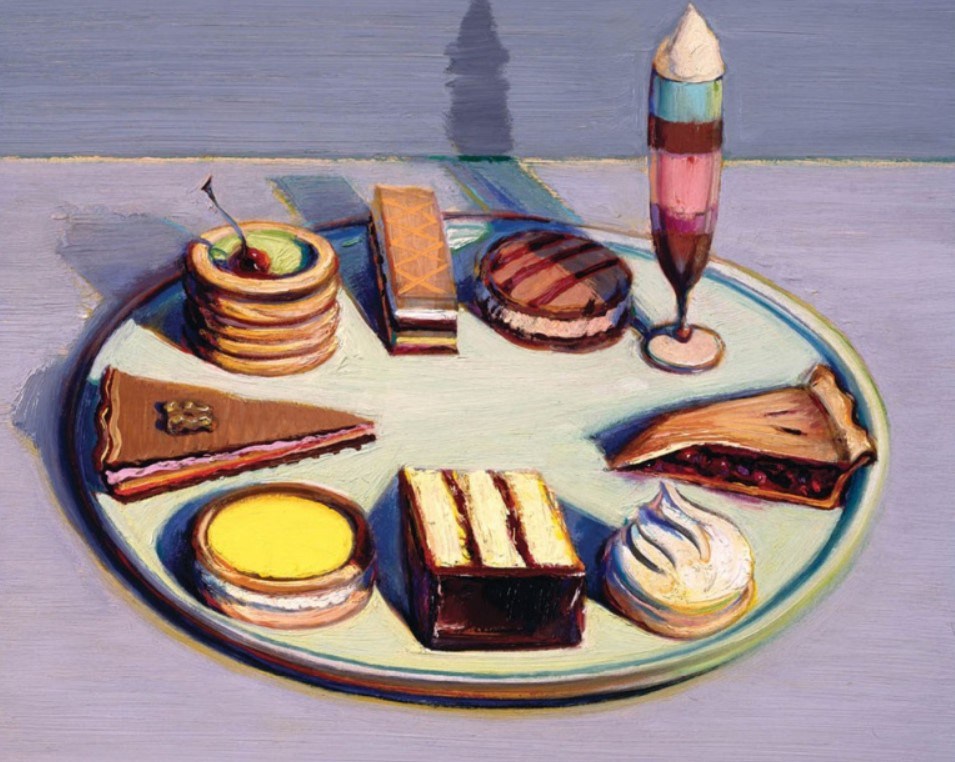
In the shadow of the spotlights
Thiebaud has lived most of his life in California, except for his first year in Arizona. He began his art career in 1936 at the Walt Disney Studios. There, still a high school student, he was entrusted with drawing intermediate shots in cartoons about Goofy, Pinocchio and others. He only stayed there for three months after being fired for participating in trade union activities.One of the reasons that prompted the future artist to go in for art is a serious back injury at the age of 16 as a result of sports. One of the directions was participation in school theatrical performances as a decorator and illuminator. Thiebaud loved to control the spotlight: he had to make sure that the actors remained in the light spot all the time. In the future, the spectral hues characteristic of the spotlight beam will become the artist’s trademark.
Due to the fact that his growing up took place in the midst of an economic decline amid the Great Depression, Thiebaud decided to choose a commercial art direction. He trained in sign-drawing, illustration and caricature drawing at the Frank Wiggins Trade School in Los Angeles. After leaving school in 1938, he had to try many professions.

Wayne Thiebaud. Self-portrait, 1973
For example, he worked as a waiter in a cinema, where he was sometimes instructed to draw advertising posters. The impressions of that time were subsequently deeply imprinted in his works.
Eats and drinks that were sold in front of the cinema would often appear in his paintings: sweets, soda, popcorn, candy vending machines.
In 1941, Thiebaud entered the US Air Force to become a pilot, but he did not work out with aviation. He eventually served as a cartoonist and also participated in the creation of educational and propaganda films under the command of Ronald Reagan in the First Motion Picture Division of the United States Air Force. After the war, he continued to work as a commercial artist, this time at the Rexall pharmacy chain. There he met a colleague who convinced Thiebaud to study fine arts.
From commercial art to commercial success
Already at the age of 30, he entered California State University, where he received bachelor’s and master’s degrees. After that, he decided to combine his career as an art teacher with painting. He found work at Sacramento City College, where he worked during the 1950s. At this time, Thiebaud began to apply the technical skills acquired over the years as a commercial artist in his painting. He began to paint small canvases depicting dishes from the windows of cafés and shops, including pies, pastries, sweets and ice cream cones with carefully drawn multicoloured outlines and bright shadows characteristic of advertising posters. While ordinary still lifes are normally created by an artist observing real objects, Thiebaud painted solely from memory. This allowed for the creation of generalized, idealized nostalgic images.In the 1950s, there were no art galleries in Sacramento, so Thiebaud exhibited wherever he could: in shops and restaurants, in the lobby of the cinema. Inspired by the artists' associations he saw in New York, he founded a cooperative gallery in Sacramento, now known as the Artists Contemporary Gallery. In 1956—1957, Thiebaud spent a year of sabbatical in New York, where he met leading American artists of the time. Among them were the abstract expressionists Willem de Kooning and Franz Kline, as well as Robert Rauschenberg and Jasper Johns, whose work would later be considered decisive for the emergence of the pop art movement. And although because of his interest in repetitive objects of mass culture, Thiebaud is also often included in this direction, he himself denied his involvement in pop art though. Moreover, he called Andy Warhol's style "flat and mechanistic". At first glance, it might seem that Thiebaud’s works really have a lot in common with his creations. But upon closer inspection, it becomes apparent that this is not the case.
In pop art the very production of works was sometimes based on stamping, emphasizing the monotony and facelessness of mass culture, whereas in Thiebaud’s paintings, even pieces of the same pie will never be the same.
Using the impasto technique, applying thick layers of oil paint, like butter cream, he creates a unique pattern every time. In one of the reviews in 1962, art critic Max Kozloff wrote: "With the help of some kind of alchemy, Thiebaud seems to work not with oil paint at all, but with a substance consisting of flour, protein, butter and sugar."
Unlike those mockingbirds, figures of pop art, Thiebaud’s works do not criticize the modern consumer society, but, on the contrary, appeal to the warmest and nostalgic images of American catering culture. From this point of view, his paintings are closer to the works of his compatriot Edward Hopper in terms of atmosphere and meaning.
Living classic
Thiebaud refers to himself more as a craftsman than an art person: he prefers to be called a painter rather than an artist. And although his name is associated primarily with paintings that look like advertisements for desserts, the collection of his works contains many interesting things besides edible still lifes: it is especially worth taking a closer look at his city landscapes.In 1972, Thiebaud settled in San Francisco, which greatly influenced his work. He began to paint the streets of the city, further enhancing their uniqueness. They are already famous for their breathtaking steepness, but the artist takes such viewing angles that they seem to be at right angles to the horizon. He handles perspective so boldly that these urban views have to be solved like puzzles that can make you feel dizzy.
At the same time, Thiebaud continues to paint his trademark "dessert" still lifes. "I've always been a darling of fate, I’ve lived a long life," he says. "So the only thing left for me is to paint pictures filled with happiness." And many people want to acquire such works, filled with joy. His paintings are sold at auctions for millions of dollars, making Thiebaud one of the highest paid living artists.

The record is still held by his Encased Cakes (2011) painting, which was sold in 2019 at Sotheby’s for $ 8,464,800.
The Crocker Museum of Art in Sacramento, where Thiebaud has lived for seventy years, has prepared a special exhibition "Wayne Thiebaud’s Hundred: Paintings, Prints and Drawings" (the exhibition will run until 3 January). A month and a half before the artist’s birthday, the museum called on everyone to congratulate him with a letter, a poem or a homemade postcard to collect a thousand of such congratulations for the holiday. "We have reliable information that the artist’s favourite dessert is lemon meringue pie," the museum staff say. "Therefore, we invite everyone to try their old or new recipes at home and celebrate with us."






